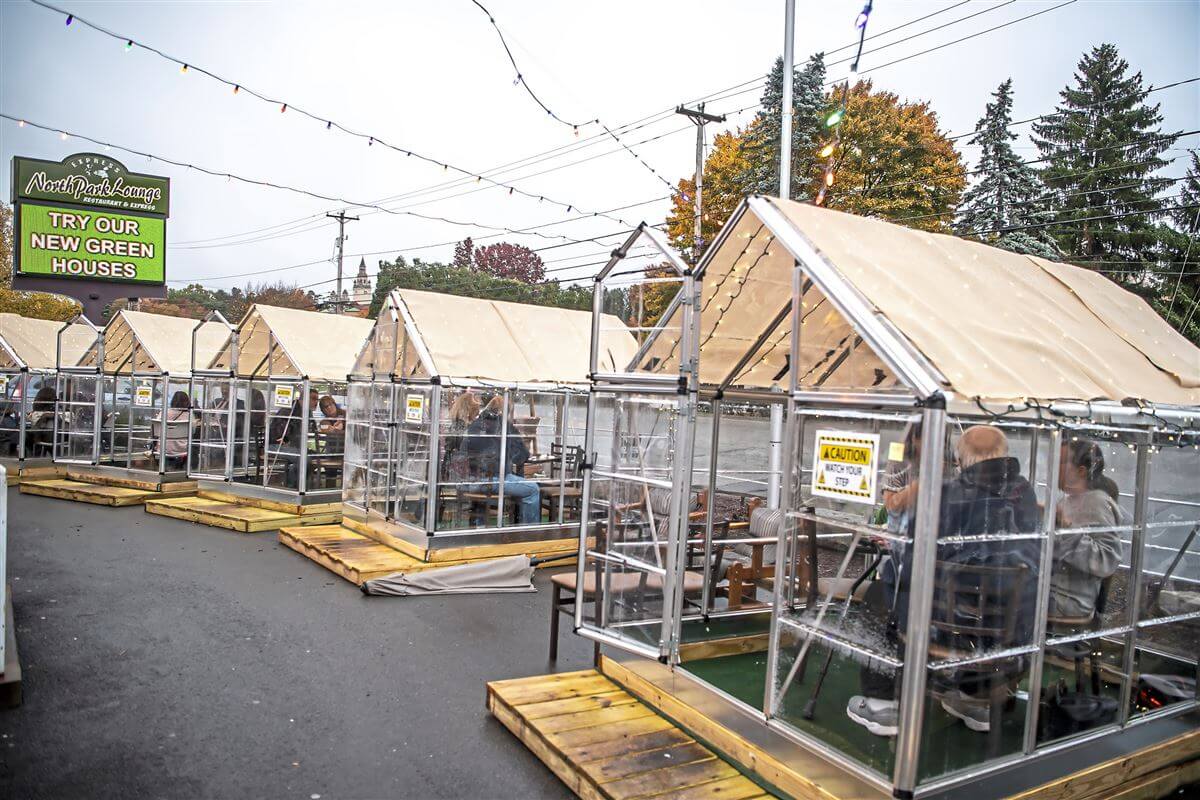
In this Oct. 20, 2020, file photo, people have dinner in greenhouses used for outdoor dining amid the coronavirus pandemic at North Park Lounge in McCandless, Allegheny County. An increasing number of governors and mayors are imposing restrictions ahead of Thanksgiving for fear that holiday travel and family gatherings will only worsen the record-breaking, coast-to-coast resurgence of the coronavirus. (Alexandra Wimley/Pittsburgh Post-Gazette via AP, File)
Approximately 63% of Pennsylvania restaurant owners said they could be forced to close if they don’t get help in the next few months.
John Longstreet felt a mix of emotions as he learned about the new coronavirus-related restrictions Gov. Tom Wolf and Secretary of Health Dr. Rachel Levine announced on Monday.
The president of the Pennsylvania Restaurant and Lodging Association was disappointed at the one-day 5 p.m. curfew on alcohol sales at restaurants and bars on Wednesday.
However, he was relieved that there were no new restrictions on seating inside restaurants.
“I’m really concerned,” Longstreet said. “December is a big month for restaurants. For some of the restaurants, that is the only thing that carries them through January and February.”

An Industry Struggles
The pandemic has hammered the hospitality industry. For months, restaurants across the state had to close their dining rooms. They are allowed to operate only in limited capacities today, with socially distanced outdoor seating and indoor seating at 50% occupancy.
While some restaurants were able to transition to takeout only, others didn’t have that capability.
“You have to find what works for you,” said Keven Parker, who owns several restaurants in Philadelphia. “If it’s a reinvention, reinvent.”
Other restaurants couldn’t reinvent, he explained, because takeout didn’t really fit with their price point, or there were other complications.
Many restaurants have not survived.
In September, the National Restaurant Association reported that 1 in 6 restaurants closed in the first six months of the pandemic. That meant a loss of millions of jobs.
And even though some jobs came back by October, the industry nationwide has 2.1 million fewer employees than it did before the pandemic reached the US.
According to Longstreet, the numbers are especially bad in Pennsylvania. He said his group surveyed restaurant owners about their hopes for the next six months, and 63% said they could be forced to close if they don’t get help.
The Cash Register for the Nation
For Keith Blalock, co-owner and executive chef at Pennsylvania Soup and Seafood House in Doylestown, it’s not just about the restaurants; it’s the web that they’re in.
“I think that it’s a bigger picture,” he said.
So many other industries are connected to restaurants, Blalock said. The farmers who grow and harvest the produce and spices; the fishermen who catch the fish; the truck drivers and companies that transport food; the companies that make plates, silverware, and cleaning materials are all hooked into the restaurant industry.
“The restaurants are just the cash register for the nation,” Blalock said.
So the struggles of the restaurant industry are going to affect those other industries.

Nine Months In
Restaurant owners have learned many lessons during the pandemic.
They’re seeing what is successful and what isn’t. They’re learning what adaptations took hold and which ones failed.
Based on different factors, certain types of restaurants have done better than others throughout the pandemic.
Blalock said restaurants that have a consistent clientele that won’t be affected by the pandemic—near a courthouse in a county seat, for example—could be better off. Meanwhile, restaurants that are destinations have struggled.
Parker said restaurants have to be more conservative in where they take risks.
Consider a small wedding they could cater. Maybe they make money on that wedding, but then an employee gets infected.
“You have to look at what are the risk factors involved,” he said. “Now they’re going to be closed for at least two weeks. You had that one revenue stream that’s less than you would have made in the two weeks you would have made if you were open.”
Parker also said how he markets his businesses has changed. He’s relying more on social media and influencers.
The restaurants aren’t the only group that is evolving.
Evolving Government Responses
On Monday, Wolf used the word “draconian” when describing the earliest shutdowns his administration enforced.
Longstreet said that was the right word.
However, Wolf and Levine have repeatedly talked about the differences in what was known then and is known now about the virus and its spread. Both have assured Pennsylvania residents that a return to the red, yellow, and green lockdown phases is very unlikely. They’ve said that targeted mitigation is the tool they should use.
The state shutdown came in March, just before the CARES Act was passed, which sent Americans stimulus checks and funds into different sectors of the economy, including the hospitality industry.
Blalock said the government should try to be more precise in sending out funds.
If the government can shut down certain areas or industries in an area, he said, it should be able to target that area with funds, too.
“Let’s take care of some of these people,” Blalock said.
Earlier this month, Philadelphia returned to stricter regulations for restaurants. It has ordered all indoor dining to stop until Jan 1, 2021.
“I understand what the city has to do, I understand what the state has to do,” Parker said.
However, it should come with relief funds, he said. Those funds have to come quickly.
“If you close someone down on Monday and you give them a grant in a month, a month could be too late, a week can be too late.”

Mixed Record
The government—state and federal—have a mixed track record.
In June, Oregon Democrat Earl Blumenauer submitted the Restaurant Act of 2020 to the US House to help the struggling industry. The bill proposes grants that can be used by restaurants to cover food and beverage costs. It’s targeted toward smaller businesses, with revenues below $1.5 million.
The $120 billion act has bipartisan support. Ten members of Pennsylvania’s 18-member house delegation co-sponsored it. Every Democrat from the state signed on, plus Republican Brian Fitzpatrick. Nine other Republican US representatives and 204 Democrats also sponsored it.
Gov. Wolf and others have urged the US Senate to pass it, but it has not done so.
On Saturday, the state Legislature passed a budget that used CARES Act funds to make up for the deficit.
Longstreet said he would have liked that money to have gone to the struggling businesses instead.
The federal government needs to act again, he said.
“There’s not enough money in the state to save the industry,” he said. “The only people that have that money are the feds.“
Politics
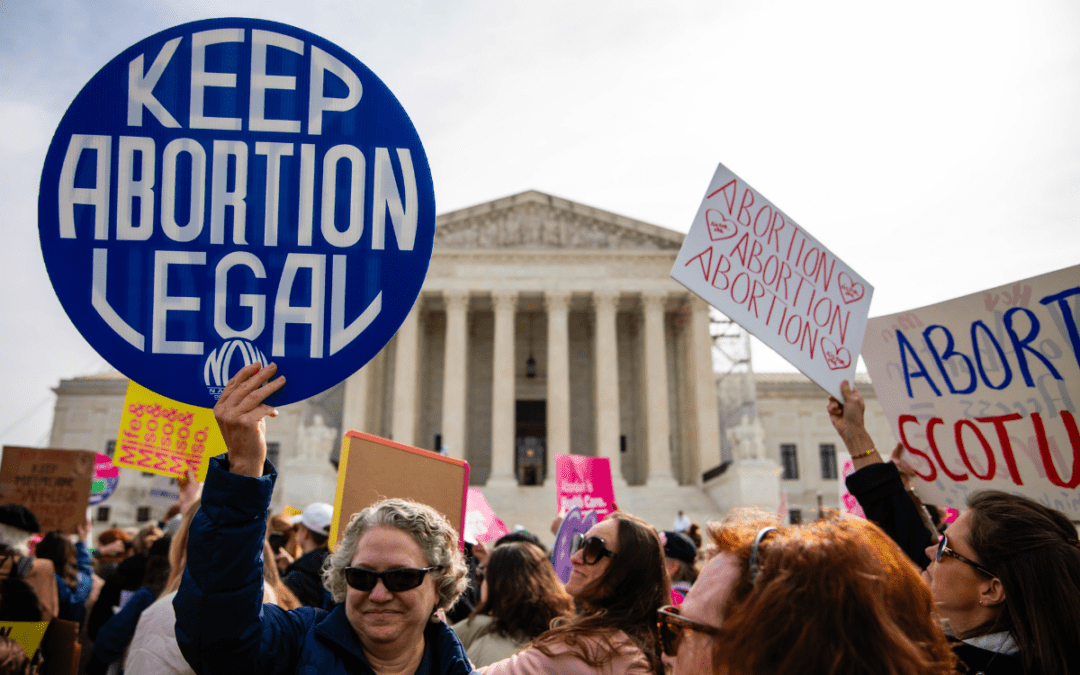
How Project 2025 aims to ban abortion in Pennsylvania
Former president Donald Trump said abortion was a state’s rights issue recently, but conservative organizations, under the banner “Project 2025,”...
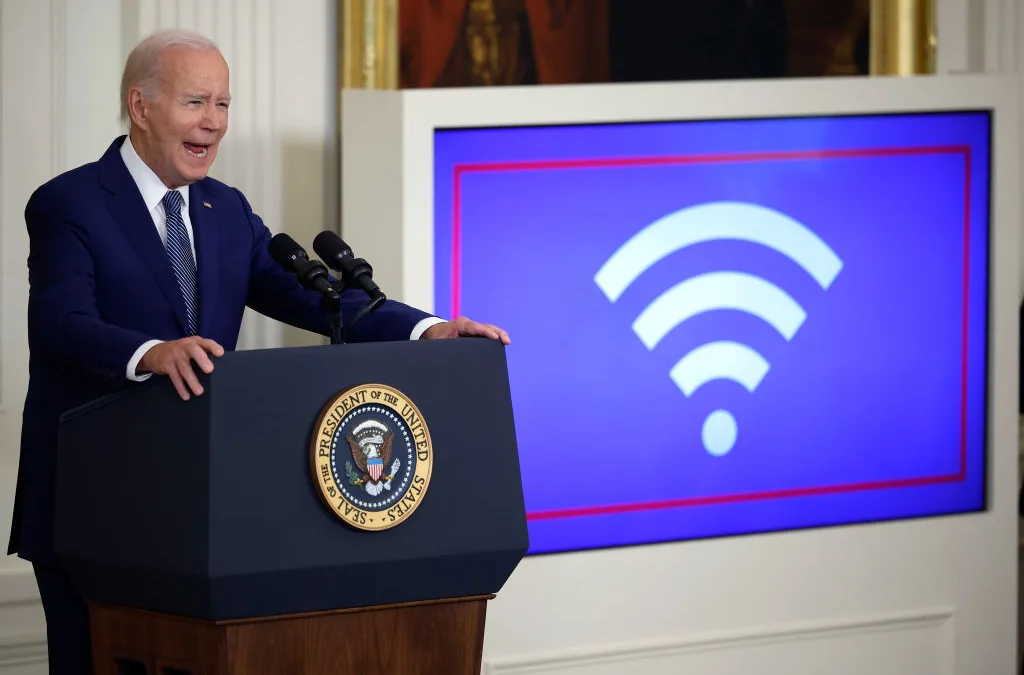
736,000 PA households could lose crucial help on their internet bills
Time is running out for the Affordable Connectivity Program, which provides low-cost high speed internet access for over 736,000 Pennsylvania...
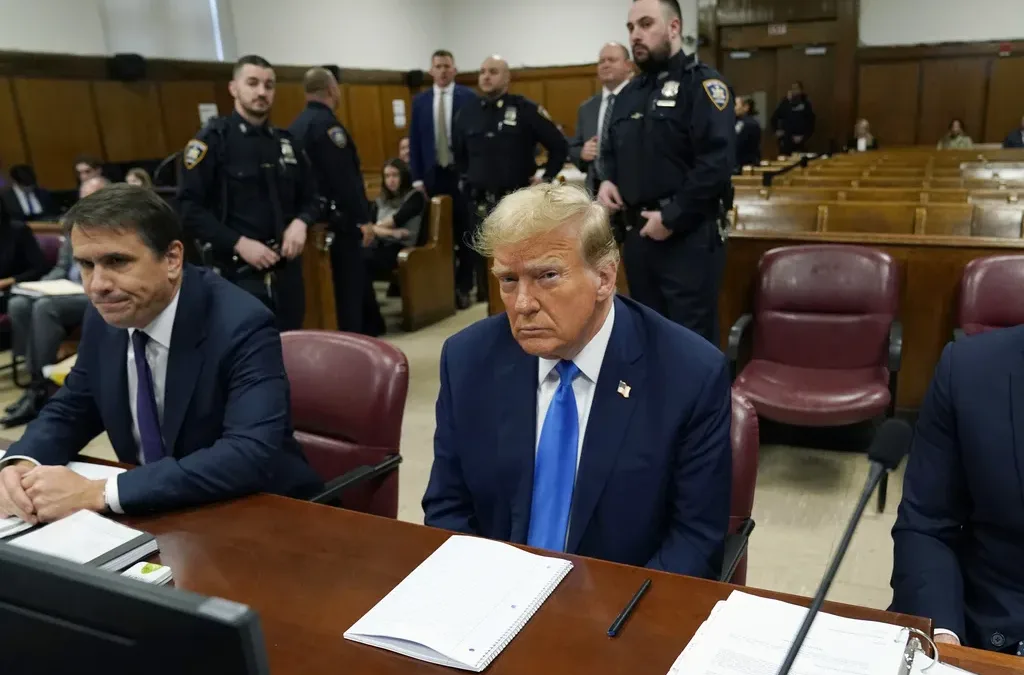
What to know about Trump’s legal issues
Over the past year, former president Donald Trump has become the center of not one, not two, not three, but four criminal investigations, at both...
Local News

Conjoined twins from Berks County die at age 62
Conjoined twins Lori and George Schappell, who pursued separate careers, interests and relationships during lives that defied medical expectations,...
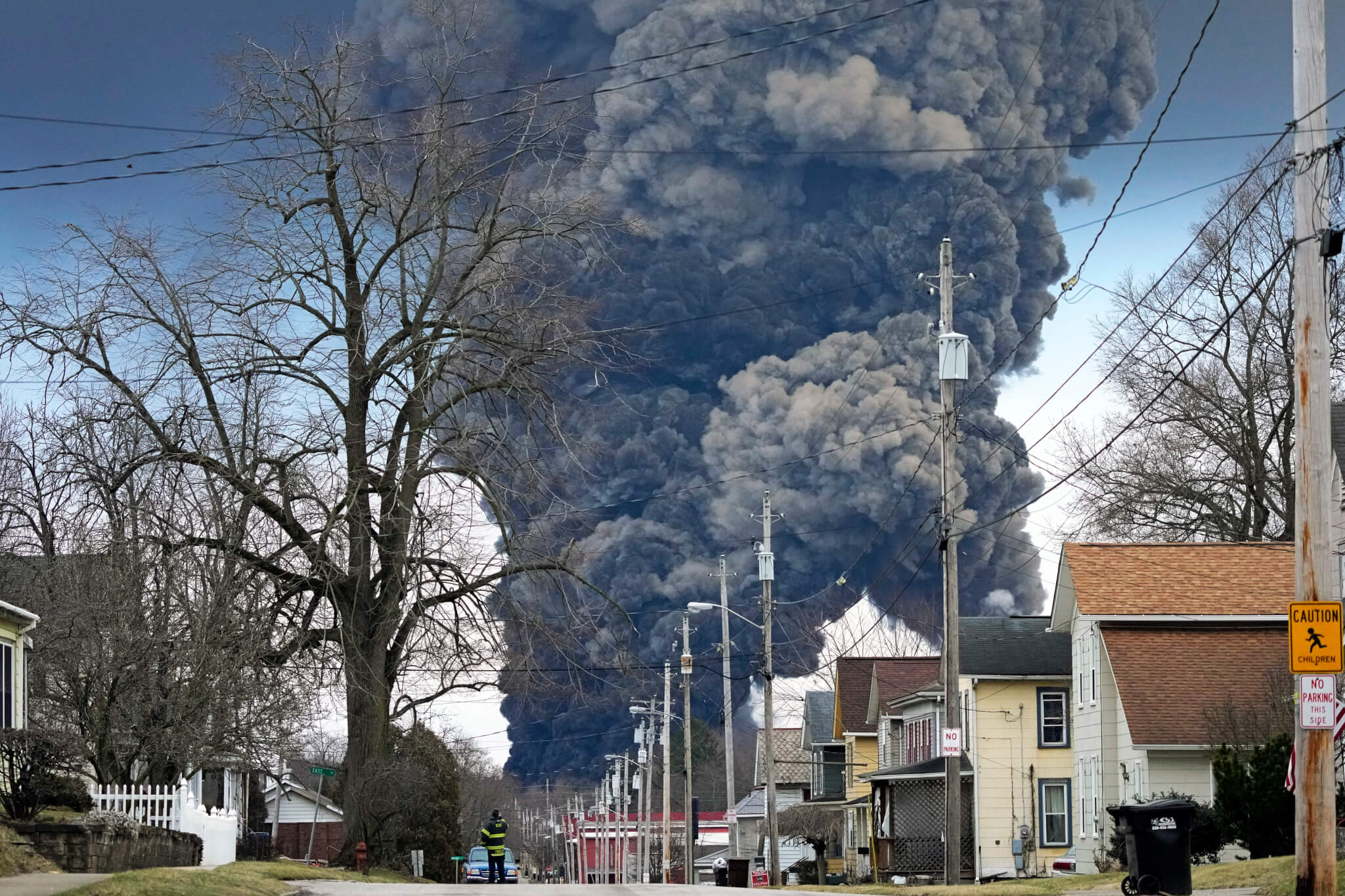
Railroad agrees to $600 million settlement for fiery Ohio derailment, residents fear it’s not enough
Norfolk Southern has agreed to pay $600 million in a class-action lawsuit settlement for a fiery train derailment in February 2023 in eastern Ohio,...





